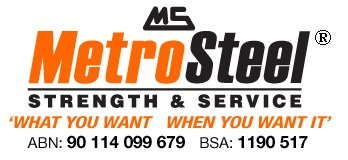Did you know that just as for aluminium there are many different types of stainless steel? Looking at them with the naked eye, it’s virtually impossible to tell them apart, but when viewed beneath a microscope there are significant differences. In total there are more than 100 kinds of stainless steel but only 6 are regularly used in industrial applications. We’re going to be discussing the difference between 304 and 316 steel, so let’s dive in and take a closer look.
Differences between stainless steel 304 and 316
The most basic difference between the two grades of steel is that 316 contains molybdenum. This is a chemical element which when added to stainless steel makes it stronger and more durable in environments that are harsh and corrosive. Indeed its main function in 316 steel is to protect against corrosion from chlorides. Looking into the other elements of the two types of steels:
-
316 contains more nickel than 304
-
304 contains more chromium than 316
In fact, stainless steel 304 usually contains 8% nickel and 18% chromium whereas stainless 316 usually contains 10% nickel, 2% molybdenum and 16% chromium.
Both types of steel are similar in appearance, characteristics, and chemical make-up. They’re both durable with good resistance to rust and corrosion. Stainless steel 304 is the most commonly used steel in the world. It’s ideal for construction jobs, is structurally sound, and bears up well in most conditions. It’s also cheaper than 316 which partially explains its popularity and widespread use.
On the downside, however, 304 slowly corrodes and over time will show signs of wear and tear.
You can expect to pay more for stainless steel 316 because it provides higher resistance against corrosion, particularly chlorides and chlorinated solutions. It’s the first choice of steel for applications where salt could be an issue which is why ocean-based oil rig structures are predominantly constructed from 316 steel. Cost becomes less of an issue in circumstances like these since 316 will last longer than 304 providing more usage too. If an application doesn’t involve salt exposure or milder acids are present then 304 is perfectly suited to the job.
So where might you find 304 and 316 steel in use? We’ve listed some common applications for both grades of steel below.
Stainless steel 304 applications
Storage Tanks
Electrical enclosures
Wheel covers
Vehicle mouldings and trim
Kitchen equipment and appliances
Stainless steel 316 applications
Marine parts
Stainless steel floats
Pharmaceutical equipment
Chemical equipment
Outdoor electrical enclosures
The key takeaway
If you need superior corrosion resistance and water is involved in your application, then 316 is certainly worth the additional cost. If not, 304 will serve you well.
If you need advice on the best type of steel or metal for your next project then come and talk to the experts and Metro Steel. We can point you in the right direction and give you a quote. Call us today on 07 3204 1000 or drop by our facility at Kabi Circuit, Deception Bay.
 Talk to an Expert (07) 3204 1000
Talk to an Expert (07) 3204 1000 Working Hours - Mon – Fri 7:00 AM – 4:00 PM
Working Hours - Mon – Fri 7:00 AM – 4:00 PM